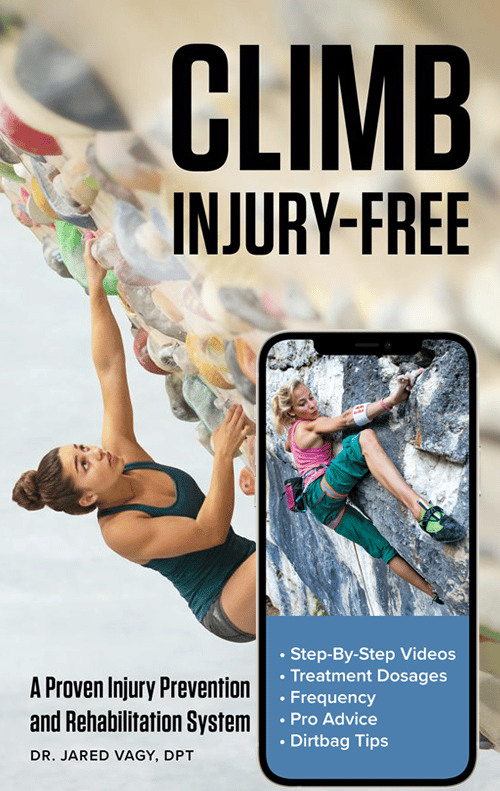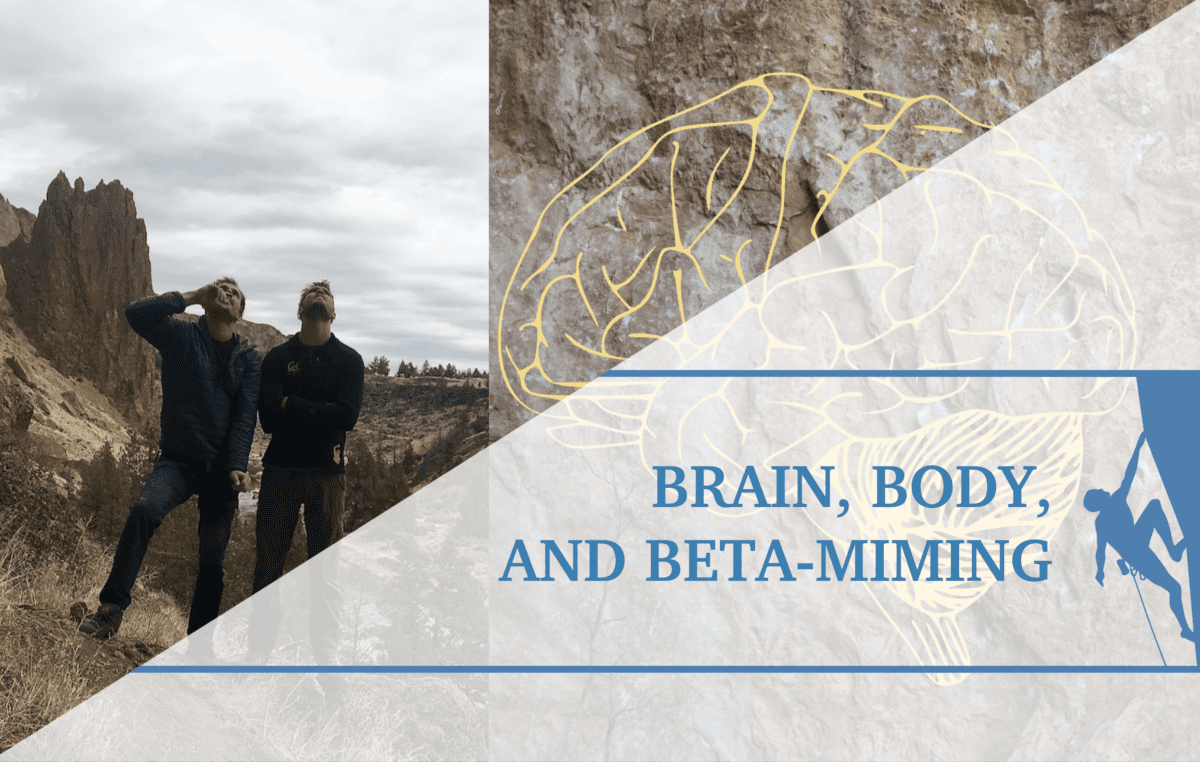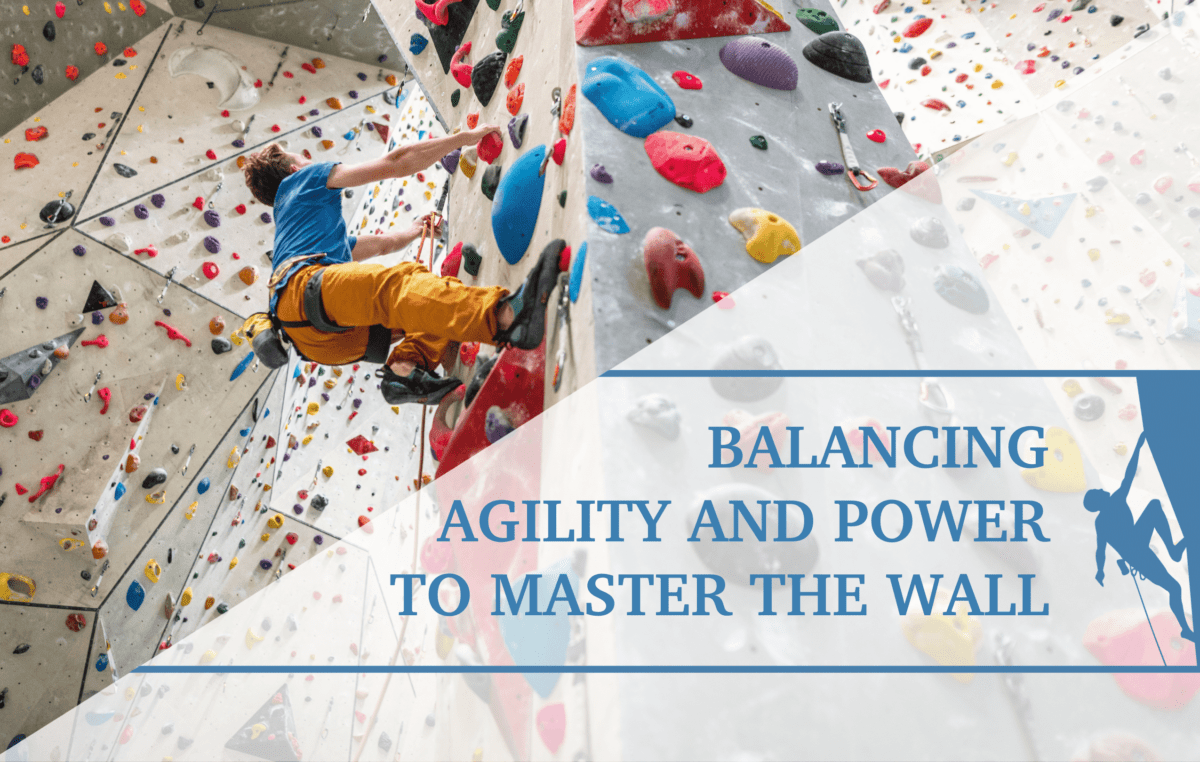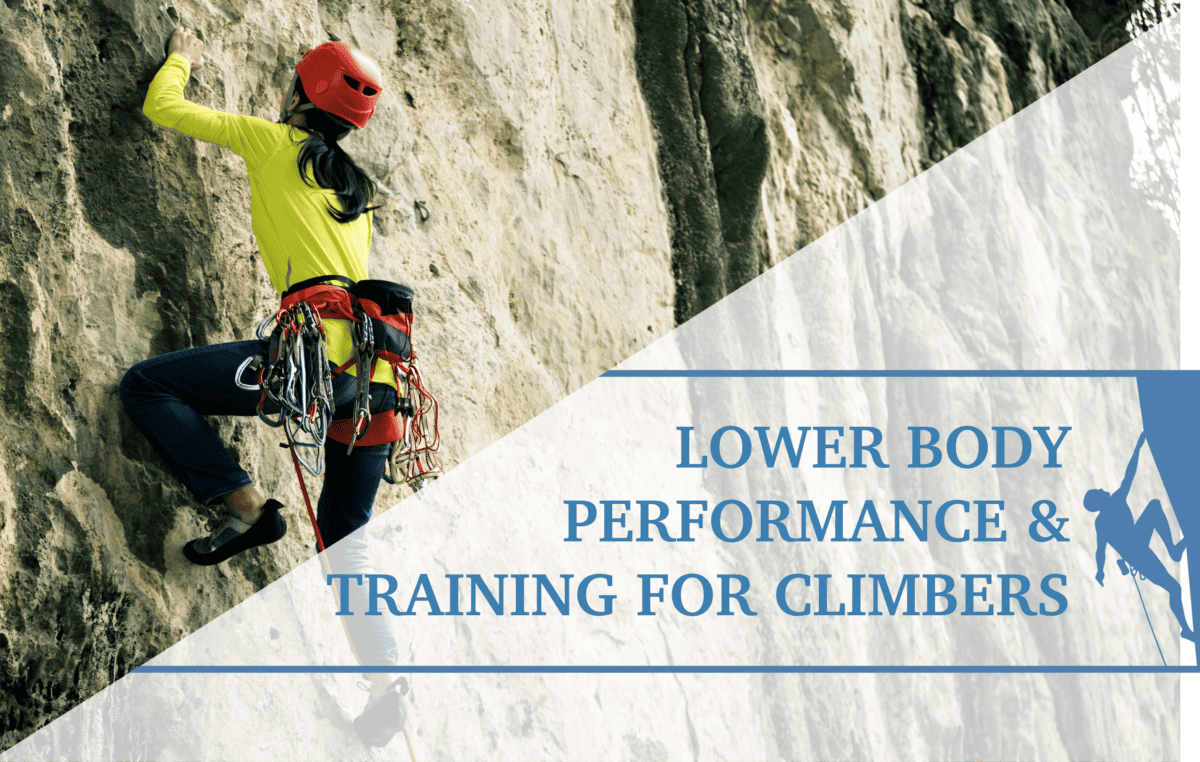Unlocking Performance: The Role of Aerobic Training in Climbing Success
There is a benefit of high-intensity interval training (HIIT exercises) to enhance cardiovascular fitness (CV fitness) for longer/multi pitch climbs. Imagine you’re at the top of a long climb. Your forearms are exhausted and you are frustrated with how out of breath and fatigued you felt during the climb. You put in many hours on the climbing wall preparing for this climb, but now you are wondering if there is something that you should have done differently with your training. You’ve spent hours at the climbing gym and doing hangboard workouts, you’ve even gone to yoga classes at the gym. What are you missing? You’ve heard a few of your climbing buddies talk about the benefits of aerobic training, but you are stressed because you don’t feel like you have much time to spend on aerobic activities.
This is a common experience for climbers, feeling fatigued and out of breath despite putting in significant time on their training. Aerobic training is often the last area climbers want to spend their time. This article will walk through why aerobic training is important to climbers, what cardiovascular fitness is, and the benefit of incorporating HIIT exercises into your routine, and how to track your own cardiovascular fitness level.
How does aerobic training improve your cardiovascular fitness
Aerobic training is important because it helps to improve your cardiovascular (CV) fitness. This is the heart and lungs ability to efficiently deliver oxygen to your muscles and organs during longer periods of exercise. If one does not have the proper level of fitness, their muscles would not receive the appropriate amount of oxygen that is adequately needed to perform the tasks. This can lead to a buildup of waste products in the muscles which can lead to increased rate of fatigue, muscle soreness, and decreased performance. Improved CV fitness leads to the following:
Benefits of CV fitness for climbers
- Faster recovery between bouts of exercise
- Better endurance on long climbs
- Decreased muscle soreness
- Improved mental health
- Improved cognitive function and decreased the probability of strokes or alzheimer
Climbing has a high cardiovascular demand and can be good for one’s aerobic fitness. Research shows that climbers reach high levels of exertion and may require a large portion of their peak oxygen uptake. Rock climbing has similar energy expenditures as running between an 8 and 10 minute mile. This is why building one’s CV fitness is important for climbers. Training for climbing can be heavily focused on strength training specifically on fingerboards or grip strength. It is highly possible that other areas of one’s fitness including aerobic fitness can be missed. If your goal is to tackle longer/ multi pitch climbs, your CV fitness has to be able to keep up with the demand being placed on it. The better the heart is able to pump blood throughout the body especially to the forearms, the longer one will last on the wall.
Below are a few of the questions that are regularly asked about aerobic exercise:
- What type of aerobic exercise should be included to improve climbing performance?
- Is running, cycling, or swimming better?
- How much time should be spent on aerobic training?
- Will aerobic exercise take away from climbing performance if it’s done on the same day?
What are HIIT exercises and why are they a good option for climbing?
There are many exercise approaches one can use to improve aerobic capacity. One type of aerobic training that could be included in a routine to maximize aerobic training is HIIT training. HIIT stands for High-Intensity Interval Training. It is a form of exercise that alternates between short bursts of intense activity and then periods of low-intensity or rest. There are 4 key features of HIIT exercises:
- Intensity: This area is intended to involve exercises that are performed around 70-80% of one’s maximum heart rate. A basic formula for figuring out your maximum heart rate is 220 minus your age.
- Interval structure: The workouts are structured around intervals. With the bursts of high intensity lasting anywhere between 20 sec to several minutes and the active recovery period or low-intensity efforts lasting for around the same time.
- Variety: HIIT exercises encompass a wide variety of exercises and activities such as sprinting, jumping, cycling, burpees, kettlebell swings, body weight exercises or any rapid movement.
- Adaptability: One great benefit of HIIT exercises is that they can be adapted to various levels of fitness and goals. The total length of the exercise can be adjusted as well as the duration of the intervals can all be adjusted based on time, fitness level, and progress.
Overall, HIIT exercises are a great way to improve one’s CV fitness, burn calories, and enhance metabolic rate. They can be a versatile option to maximize one’s workout and switch up your training routine especially when you are in a time pinch or don’t want to spend hours trying to get the same benefit. HIIT is an efficient way to improve CV fitness through resistance based exercises that can mimic movement patterns seen in climbing to allow for better endurance with climbing. There has even been some research shown in the benefit that HIIT exercises have on the oxidative capacity in climbers finger flexors.
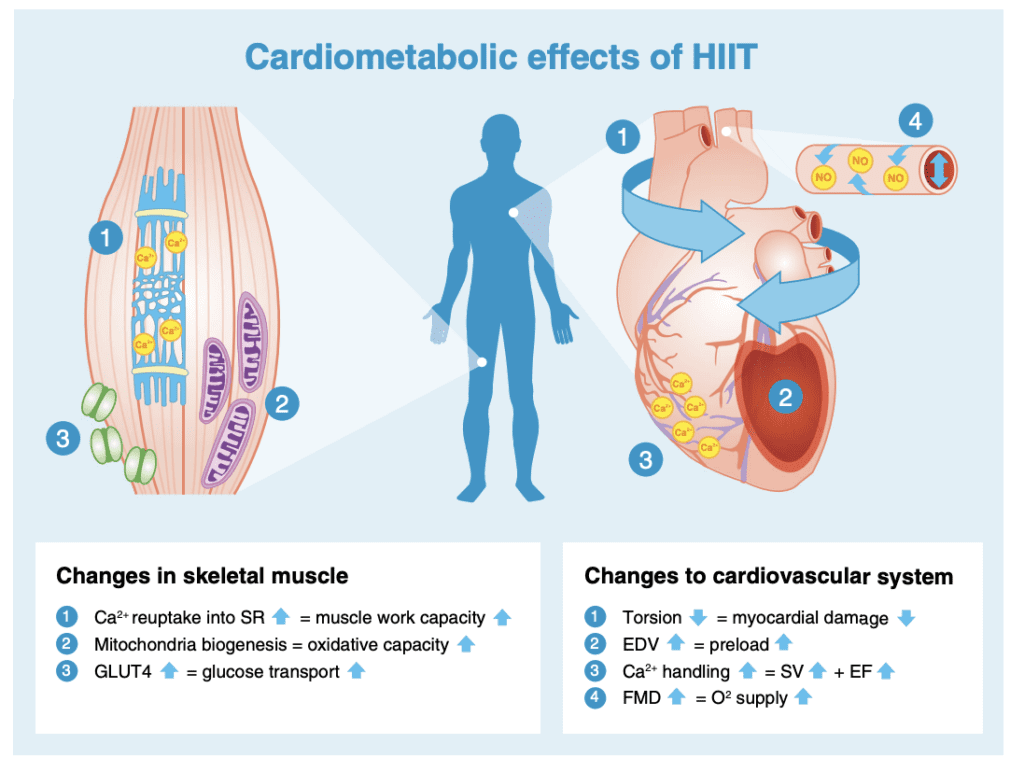
How can you measure your cardiovascular fitness?
If you are interested in measuring whether or not incorporating HIIT training improves your aerobic capacity, there are several ways to measure your CV fitness. You should complete a baseline test and based on your training program, retest in 3-6 months. This will allow you to assess the effectiveness of your training program. Below are a few tests to monitor your CV fitness progress.
- VO2 Max testing: Known as the gold standard for testing VO2 max. It measures the maximum amount of oxygen that your body can utilize during intense exercise. This is typically performed in a lab as you are taken through a progressively intense exercise while your heart rate and oxygen consumption are measured.
- Treadmill test such as the bruce protocol: Usually performed by a professional. This involves progressing through stages on the treadmill of increased incline and speed while your heart rate, blood pressure, and perceived exertion are monitored.
- 3 min step test: Is a submaximal test of your CV fitness that you can do on your own and then compare your results found online. While using a metronome set at 96 bpm, you step up and down on a 12-inch step for 3 minutes to the beat. Your total one minute post exercise heart rate is the score.
- Activity trackers and Apps: Most smart watches out there now have a section that records your VO2 max and your heart rate so you can use these tools to keep track of your fitness level.
- You can also track your own progress by simply assessing how you are feeling during your climbs and seeing if you have more endurance.
Conclusion
The main purpose of this article is to educate climbers about the importance of improving their CV fitness if they have goals of longer or multi-pitch climbs. One way I suggest doing this is by incorporating HIIT exercises into your routine 2-3 times a week for at least 20 minutes each time. HIIT is known to have the benefit that is similar to if not superior to moderate-intensity continuous exercises such as running while requiring significantly less of a time commitment. It can be more convincing to continue to focus on climbing specific strengthening and incorporate at least 20 minutes of HIIT exercises than convincing someone to go for an hour plus run 3x/week.
In conclusion, if you are someone who has big climbing aspirations, it is important to have adequate CV fitness to take your climbing to the next level.
Author Bio

My name is Tifanee and I am a third-year Doctor of Physical Therapy (DPT) student at University of Southern California (USC). I love anything that gets me outside such as hiking, cycling, canyoneering, and climbing.
References:
- Cassidy S, Thoma C, Houghton D, Trenell MI. High-intensity interval training: a review of its impact on glucose control and cardiometabolic health. Diabetologia. 2017;60(1):7-23. doi:10.1007/s00125-016-4106-1
- Edwards P. It’s a HIIT. Prowess Climbing Coaching. 2024. Accessed March 20, 2024. https://prowesscoaching.co.uk/articles/for-the-climber/its-a-hiit/.
- Feldmann, A., Lehmann, R., Wittmann, F. et al. Acute Effect of High-Intensity Climbing on Performance and Muscle Oxygenation in Elite Climbers. J. of SCI. IN SPORT AND EXERCISE 4, 145–155 (2022). https://doi.org/10.1007/s42978-021-00139-9
- Paige Waehner C. How’s your cardiovascular fitness? get the scoop on how to improve yours. Verywell Fit. May 22, 2024. Accessed January 8, 2024. https://www.verywellfit.com/cardiovascular-fitness-1230820.
- professional CC medical. How to improve cardiovascular endurance. Cleveland Clinic. February 21, 2023. Accessed January 7, 2024. https://my.clevelandclinic.org/health/articles/24754-cardiovascular-endurance.
- Smetanka R, Armenta R, Nessler J, Newcomer S. Heart Rate Response, Duration, Grip Strength, and Anthropometric Characteristics in Recreational Indoor Rock Climbers.
Journal of Strength and Conditioning Research. 2022; 36 (3): 832-837. doi: 10.1519/JSC.0000000000003540.
- Disclaimer – The content here is designed for information & education purposes only and the content is not intended for medical advice.

